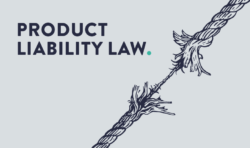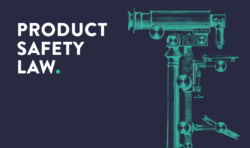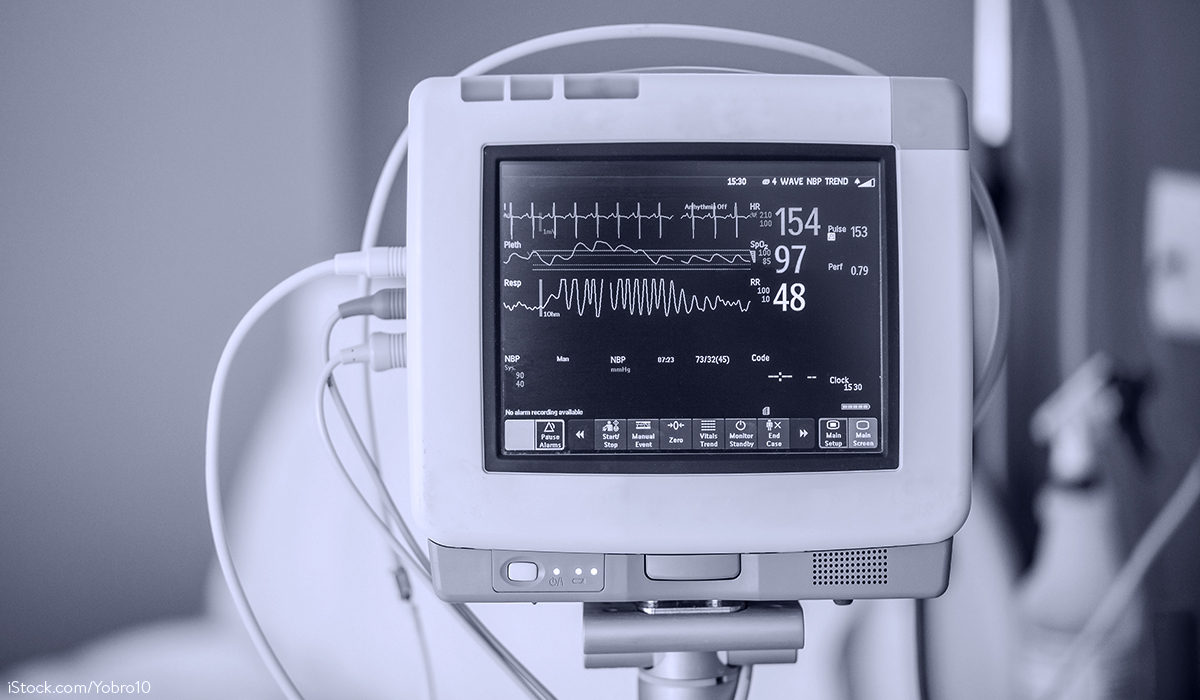A. Reorganization of the European and national product safety law
First of all, the focus is on the new European and national product safety law which has been in force since 16.07.2021 in the form of Regulation (EU) 2019/1020 (the so-called EU Market Surveillance Regulation) and the Act on the Provision of Products on the Market (Product Safety Act – ProdSG) of 27.07.2021 and the Act on Market Surveillance and Ensuring the Conformity of Products (Market Surveillance Act – MüG) of 09.06.2021, respectively.
Even though the laws in question have now been in force for almost six months, it can be assumed that it will only be possible to make reliable forecasts on the interpretation of individual provisions in 2022. This applies, for example, to the practically important question of the admissibility of digital manuals or the market surveillance of online trade with new obligations of economic actors that have been brought forward in time.
Further details are available in our blog posts New Market Surveillance Act passed and The German Bundestag passed the Product Safety Act (ProdSG) on 20.05.2021.
B. Concretization of the accessibility requirements
With the Act on the Implementation of Directive (EU) 2019/882 on Accessibility Requirements for Products and Services and on the Amendment of Other Laws (“BFSG”) of 16.07.2021, the German legislator has reacted in good time to its obligation under European law to implement the Directive. However, it has not yet enacted all of the legal and administrative provisions that must be in place by 28.06.2022 in order to comply with the relevant Directive.
Specifically, the applicable accessibility requirements have not yet been specified in this act. Instead, the legislator is authorized in Sec. 3 para. 2 BFSG to provide for the necessary concretizations by way of a statutory ordinance. These must, of course, be based on the detailed requirements in Annex I of Directive (EU) 2019/882, so that the scope of the national legislator is very limited. Annex I of Directive (EU) 2019/882 contains, for example, product-related “requirements for the provision of information” or specifications for the “design of user interface and functionality“. The new accessibility requirements will apply, for example, to PCs, notebooks, tablets, cell phones, televisions or e-book readers. It is noteworthy that this is a “CE act”, i.e. the manufacturer must carry out a conformity assessment procedure, affix the CE marking and issue an EU declaration of conformity.
C. Reform of the General Product Safety Directive
Next, the focus is on reforming general product safety law at the European level. A first draft of a new product safety regulation (hereinafter also “GPSR-E”) is already available. The proposal is aimed at regulating the safety of non-food consumer products and is intended to replace Directive 2001/95/EC on general product safety (the so-called General Product Safety Directive). The EU Product Safety Regulation is thus intended to establish basic safety requirements for consumer products not subject to sectoral harmonization legislation and obligations for economic operators. A particular concern of the proposal is the stronger coverage of online trade; in this respect, a synchronization with Regulation (EU) 2019/1020 (so-called EU Market Surveillance Regulation) is to be achieved. The General Product Safety Directive remains unaffected by the EU Market Surveillance Regulation, which is in force throughout the EU since 16.07.2021. At the same time, it is not mentioned in Annex I of the EU Market Surveillance Regulation, so that the EU Market Surveillance Regulation does not apply in this respect. In principle, the EU Market Surveillance Regulation only applies to harmonized products, i.e. to products that are subject to one of the harmonization laws listed in Annex I of the EU Market Surveillance Regulation. In order to ensure consistency and uniformity of the rules for harmonized and non-harmonized products, the GPSR-E links to a number of provisions of the EU Market Surveillance Regulation, such as its Chapters IV, V and VI on market surveillance and cross-border administrative assistance, and declares precisely designated provisions of the EU Market Surveillance Regulation applicable. It also makes reference to the practically important Art. 4 of the EU Market Surveillance Regulation. However, the GPSR-E does not amend the EU Market Surveillance Regulation. Since the regulations are to be introduced by way of an EU regulation, the German ProdSG, which transposes Directive 2001/95/EC into German law, would become largely obsolete.
I. Material and personal scope of application
The Regulation is intended to apply to new, used, repaired or reconditioned products placed or made available on the market to the extent that they are not subject to sectoral harmonization legislation (Art. 2 GPSR-E). Thus, the proposal covers a large part of the non-harmonized product sector, i.e. specifically the non-CE-marked products such as numerous types of furniture, textiles or sports equipment. The personal scope of application includes the economic operators, which include, among others, both stationary traders and online traders. As in Regulation (EU) 2019/1020, a product shall be deemed to be made available on the market if it is offered for sale online and the offer is directed at EU consumers (Art. 4 GPSR-E).
II. Key provisions affecting manufacturers
The obligations addressed to manufacturers are found in Art. 8 GPSR-E. First and foremost is the obligation to place only safe products on the market. Safety must also be ensured in the context of series production (Art. 8 para. GPSR-E). New is the obligation to prepare technical documentation on the products and to keep it (Art. 8 paras. 4, 5 GPSR-E). Art. 8 paras. 6-8 GPSR-E anchors already known labeling and information requirements. A general obligation directed at all economic operators follows from Art. 13 GPSR-E. According to this, an internal company procedure must be set up in order to fulfill the general safety requirement under Art. 5 GPSR-E, according to which only safe products may be provided. This means, for example, the implementation of a quality assurance or risk management system. Furthermore, manufacturers are obliged to (passively) monitor products and establish a complaint management system (Art. 8 para. 2 GPSR-E). In addition, there are far-reaching obligations to provide information and to cooperate (Art. 14, 19 para. 11 GPSR-E). For example, manufacturers will be required to continuously inform distributors, importers and online marketplaces about identified safety problems. If there are indications that a product is not safe, there will also be an obligation in future (in contrast to the current situation) to implement corrective measures without delay (Article 8 para. 10 GPSR-E). The existing obligation to notify authorities (so-called notification obligation) will be supplemented by a corresponding information obligation to consumers via the so-called Safety Gate rapid alert system (Art. 8 para. 11 GPSR-E). In relation to consumers, further information obligations arise when recalls take place or safety warnings are issued; the existing customer data must be used for this purpose (Art. 33 GPSR-E). In addition, manufacturers must inform market surveillance authorities within two working days of becoming aware of accidents caused by a product they have made available (Art. 19 para. 1 GPSR-E). Art. 18 GPSR-E establishes special information requirements in the context of online sales offers. This information has to contain the manufacturer, product identification and safety instructions.
II. Core regulations concerning distributors
Distributors also have a responsibility to ensure product safety (therefore, they must also establish an internal company procedure in accordance with Art. 13 GPSR-E). In the event of suspected non-conformity, the distributor may only make a product available if conformity has been restored (Art. 11 para. 3 GPSR-E). The scope of obligations is, however, less extensive than the obligations of manufacturers. Art. 11 GPSR-E contains a specific set of obligations that apply to distributors. Specifically, distributors have formal inspection obligations, i.e. they must check whether the product bears the manufacturer’s or importer’s marking and other safety information (Article 11 para. 1 GPSR-E). On the other hand, they must prevent the impairment of product conformity as long as the product is within their area of responsibility (Art. 11 para. 2 GPSR-E). In the event of non-conformity or a product risk, extensive notification and cooperation obligations in relation to the competent market surveillance authorities and manufacturers and importers are anchored (Art. 11 paras. 3 f., 14, 19 para. 2 GPSR-E). Likewise, the information obligations towards consumers in the course of field measures according to Art. 33 GPSR-E apply to distributors. The special information obligations under Art. 18 GPSR-E in the context of distance selling also apply to online traders.
III. Consumer rights
New and worth mentioning is the provision of Art. 35 GPSR-E, which gives consumers a right to a free remedy against the responsible economic operator in case of a recall. In addition to the manufacturer, the distributor can theoretically also be the economic operator responsible for the recall. This claim is in addition to the warranty claims under civil law and the claims arising from product and producer liability.
IV. Time horizon
According to the EU Commission, the draft is still being negotiated within the framework of the trialogue (Council, EU Parliament, EU Commission). There is no time schedule available at the moment, so it is not possible to predict when the EU Product Safety Regulation will be adopted and enter into force. Against this background, it can be assumed that the project will take some time before it enters into force (probably in an amended version).
D. Reforms in sectoral product safety law
As far as sectoral product safety law is concerned, the focus in 2022 will be on the following legal acts:
- Revision of Directive 2006/42/EC (so-called EC Machinery Directive).
- Revision of Directive 2009/48/EC (so-called EC Toys Directive)
- Revision of Regulation (EU) No. 305/2011 (so-called EU Construction Products Regulation).
In this respect, the activities at EU level should be followed closely, even though the procedures in all three sectors are likely to take some time.
E. Reform of the EU Radio Equipment Directive
Looking at the Commission’s submitted proposal from the fall of 2021 to improve the compatibility of radio equipment with accessories in general and uniform charging cables in particular, we dare the prediction that this proposal will continue to be worked on at full speed in 2022, especially since it will simplify the use of radio equipment, reduce unnecessary waste and contribute to cost reduction.
Further details are available in our blog post Proposal for uniform charging cables at EU level.
F. New edition of the “Blue Guide
Since a new edition of the so-called Blue Guide, which serves as a central guide for the application and interpretation of European product regulations, has been in the works for some time (the current edition is from 2016), it can be hoped that it will be published in 2022. However, the planned EU product safety regulation could cause a delay. The aim of the new edition is to clarify and clear up previously disputed views and unclear statements in the preliminary edition, for example with regard to the handling of spare parts and the status of software.
Do you have any questions about this news, or would you like to discuss the news with the author? Please contact: Dr. Carsten Schucht







